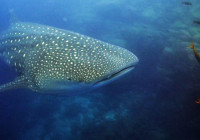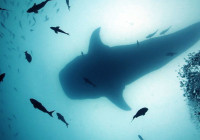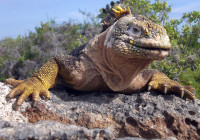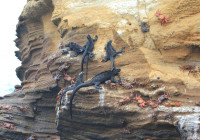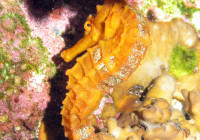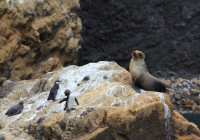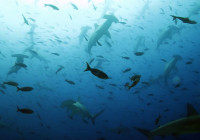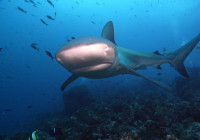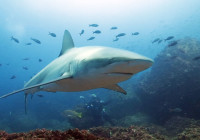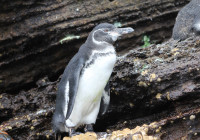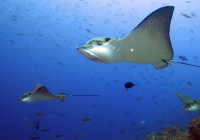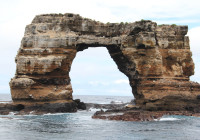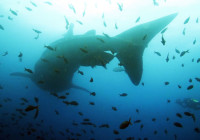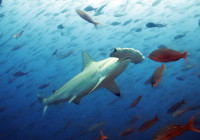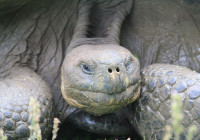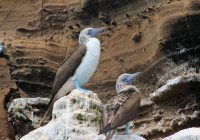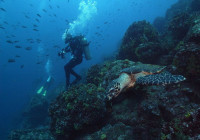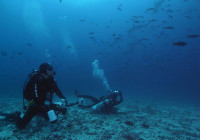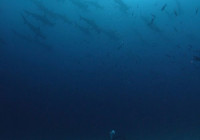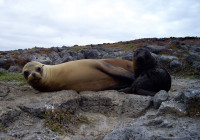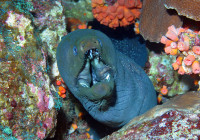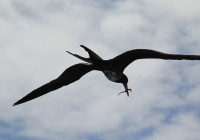Galapagos
Galàpagos islands are one of the most remote, pristine and fascinating places on Earth. Located 250 miles west of the coast of Ecuador, this volcanic group of islands is affected by seven majour cold currents extremely rich in nutrients. When these waters meet the equatorial sun, it’s an explosion of life!
A real Mecca for divers, the archipelago is one of the best places to dive with big pelagics.
Here, divers can encounter practically everything: different kinds of sharks, including the whale shark, dolphins, whales, rays, sealions, penguins, marine iguanas, marlin, sailfish, orcas and lots of other endemic species.
The main attraction are the big schools of scalloped hammerhead sharks, who patrol these waters by the hundreds.
Climate: There are two seasons. Tre dry, “garua” season runs from late June to December, when it is relatively cool and dry. August is the coolest month. During this dry season, the water temperature is lower, the Ocean is generally rougher and visibility is lower due to plankton bloom. But this combination of conditions brings in the whale sharks. Late December to June is considered the hot or wet season, with March and April usually the hottest, wettest months.
Best time of year: Year round, but the best months to admire the greatest schools of hammerheads are July, August and September. During this time of year, you’ll even have more chances to dive with whale sharks, especially at Darwin Island.
Where to stay: Dive cruise aboard one of the two Aggressor Fleet’s boats: Galapagos Aggressor I e II
Diving centers: Aggressor Fleet (www.aggressor.com).
Best dive sites: Darwin’s Arch, Wolf Island, Isla Lobos, North Seymour Island, Gordon Rocks, Bartolomé, Cousin’s Rock, Plaza Islands, Mosquera Island, Punta Vicente Roca (Isabela).
Must see: Hammerhead sharks at Darwin and Wolf, sealions at Isla Lobos, land excursions at Isla Lobos and North Seymour Island, wild and pristine islands, inhabitated by sealions land and marine iguanas, birds, including the famous “blue footed booby”. A land excursion to Bartolomé island where, if you’re lucky, you can swim with penguins.
Diver’s tip: Galàpagos diving is mainly for experienced divers because of extreme conditions: cold water, strong currents and limited visibility. I strongly recommend that you have experience with rough surface conditions, low visibility and strong currents. Also, keep in mind that diving in cold waters requires thicker wetsuits and hoods (5 or 7 mm).
Website: www.aggressor.com






